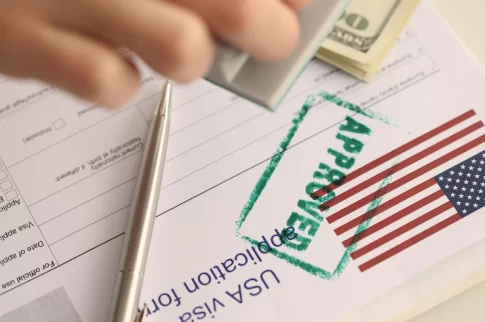Everything You Need To Know About Writing An RFP

Table Of Contents
In today’s fast-paced world, the process of writing a request meant for a proposal (RFP) remains pivotal for businesses of all sizes. An RFP refers to a document that pleads a proposal. For every business owner, it is important to know how to write an RFP.
Generally, this is made via a bidding process, either by a company or an agency willing to procure a service, precious asset, or commodity.
The primary purpose of this procedure is to stimulate prospective suppliers to propose innovative solutions and strategies, which can pave the path of achieving business objectives. Read further to explore more about the intricacies of writing an effective RFP.
Understanding The Basics Of RFP Writing
Alt text: A young man sitting at his work desk while using his laptop.
The core purpose of writing an RFP is to enable suppliers to understand your requirements and propose a solution accordingly. It acts like a bridge connecting your needs with potential suppliers’ solutions.
One of the fundamental steps while crafting an RFP is understanding your audiences, i.e., potential suppliers. You should have a clear idea about their expertise and knowledge base.
Equally critical is to specify your needs and outcomes. This includes specifying the purpose, scope, and target audience. This clarity will help vendors propose a customized solution matching your expectations.
Key Components About How To Write An RFP?
In an RFP, the initial section should vividly describe your company, your mission, and the purpose of the RFP. This is a chance to introduce your establishment, its culture, and what it aims to accomplish.
An RFP should also include the Scope of Work (SOW) section, outlining what the project involves and the tasks you expect the vendor to perform. This can include the details of tasks, expected outcomes, and the resources needed to implement the project successfully.
Succinctly defined and reasonable deadlines must be an integral part of an RFP. This helps vendors plan and prioritize their work, assuring them a fair process.
Finally, including terms and conditions in the RFP protects both your company and the prospective supplier. It’s important to be very specific about the expectations, deliverables, payment terms, and other operational protocols following the contract agreement.
The Art Of Crafting A Request-For-Proposal
A meticulous project description defines what you aim to accomplish with the services or products sought via RFP. It catches the attention of potential suppliers and assists them in offering tailored solutions.
An engaging project description begins with highlighting issues or gaps that your company is experiencing. Hence, knowing how to write an RFP is followed by the objectives you aim to achieve.
Providing specific examples of successful outcomes or deliverables can also create a buoyant prospect. It can help suppliers understand the quality standards and performance metrics your company expects.
Best Practices For Selecting And Communicating RFP Requirements
Selecting and communicating the right RFP requirements is a significant step in ensuring you receive meaningful responses. To do so, be specific about your needs and what you want to achieve. Vague descriptions can confuse potential suppliers and lead to off-target proposals.
Keeping communication open, clear, and responsive with potential suppliers is always advisable. This can encourage them to seek clarifications and provide a more accurate and customized solution. It will vastly ease the overall process by making use of management systems specifically configured for RFP.
Evaluation Criteria: How To Write An RFP?
Creating a set of evaluation criteria is crucial when selecting the best proposal. Firstly, heavy consideration should be assigned to the different aspects of the proposal, such as cost, quality, and expertise. This allows for a more systematic evaluation.
Lastly, it’s important to ensure the chosen proposal aligns with your company’s goals and objectives, not just immediately but also in the long run. This scrutinizing process may demand a lot of effort and resources, yet it will be worth investing in the long-term success of your business.
Read Also:
You May Also Like

August 18, 2022
























